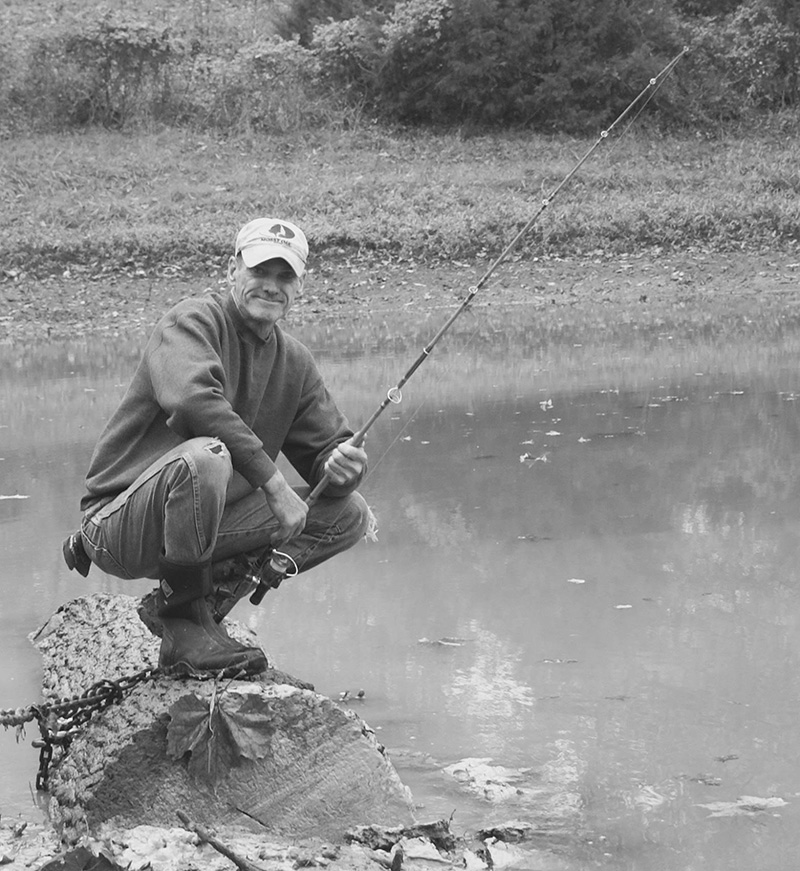Recovered Wood
When wood artists look for that perfect log, they don’t often do so in the bottom of a pond – but wood artist Richard Jackson considers such a find to be a monumental one…especially this particular log. Logs submerged for long periods of time underwater are described as river or lake recovered wood, deadheads, or sinkers. Boards created from recovered wood have gained desirability on the market because of the attractive color variation, durability, and perceived sustainable benefits.
As odd as it may seem, sunken logs provide excellent quality wood products. Wood rots when exposed to light, oxygen, and wood-consuming organisms — something lake or river bottoms protect the logs from, sometimes for many years. Many trees also contain oils that have preservative effects, so when logs lay in a muddy substrate for extended periods of time, the wood fiber absorbs the minerals and tannins found in the water and soil, which give the wood its unique hues of grey and olive green. If the logs were embedded in sandy soil, then the wood may exhibit hues of red or deeper gold. If the logs are from old-growth trees, then the wood grain is extremely dense, which increases durability and is exactly what a wood artist considers a treasure-find.
Story of this Recovered Wood Log
There’s usually a story behind a timbered log recovered from a body of water. Let’s face it, perfectly good wood that has been cut as timber doesn’t find its way to the bottom of a pond, lake or river by itself. In this area of Missouri years ago, loggers faced the challenge of turning massive trees into lumber. Once a tree was cut, it took a lot of work to turn it into a log and then transport it to a sawmill. Mules were tasked to move logs from point A to point B along cleared paths, and occasionally a log would end up rolling down a ravine and possibly end up in the creek, river or even a pond. This would usually mean the log was too much trouble to retrieve and there it might lay still to this day.
Over 20 years ago, the land belonging to Richard’s sister and brother-in-law was timbered and while mules were not used to move the logs, getting them off the hill was still challenging. The road along the back of the property was nothing more than a small, narrow pond dam path and it was barely wide enough for the heavy equipment that moved the logs. It so happened that while crossing that pond dam, the trailer went off the edge and dumped a whole load of logs into the pond. The loggers retrieved them all in short order, but one log was too submerged and too large for the equipment to reach – and so there this “old growth” oak log stayed.
Recovered Wood vs. Reclaimed Wood
There is a difference between “reclaimed” and “recovered” wood used in Richard’s projects. “Recovered” wood is salvaged timber that was never used but pulled from water, or land, where it lay for years. “Reclaimed” wood is wood that was used for some purpose in the past and salvaged when that use becomes obsolete – i.e. old barnwood or beams, railroad ties, old pallets, wine casts, etc. Recovered wood is more difficult to obtain and more highly sought after by craftsmen. Recovered logs are touted as sustainable or environmentally friendly. The term “old-growth” refers to trees that have naturally reached their full maturity within an environment that encourages slow growth. Old-growth trees are typically stronger and larger than others because they took decades and sometimes centuries to mature.
Knowing what happened and that the log was “old-growth” oak, Richard looked for it in that pond for years – but not knowing exactly where it was made finding it in the murky waters fruitless. That is until a really dry Fall in southeast Missouri brought the level of the pond to an all-time low. One late fall day while casting for fish – it revealed itself to him! What a find! Now the challenge to get it out was a big one, but he was determined.
The time and effort are put forth to extract the sinker log spanned several weeks. First, a chain was laboriously put around the log – a task made a tiny bit easier because of the muddy pond bottom. Then a come-along was attached to the chain, tied off to a big sycamore tree, and the slow process of inching it from the grasp of that mud started. This took weeks, helped a little by rain spells that raised the log a few inches now and again. The intent was to retrieve the log without causing a disturbance of sediment that results in an increase of turbidity. Turbidity is a measure of water clarity calculated by how well light scatters throughout a liquid. High sediment suspension in the water leads to an increase in total suspended solids. When turbidity is increased at an unnatural rate, this creates problems on multiple levels within a pond’s ecosystem—blocking light for photosynthetic organisms, smothering egg nests, and inhibiting hunting abilities of aquatic animals, to name a few.
Once the log was wrestled to the bank of the pond, it needed to dry and season. Drying wood is the process of removing the moisture, slowly, to stabilize the wood structure, allowing it to be used for whatever one chooses. It is a slow process, but we can’t wait to see what treasures will eventually become new creations from this old oak log recovered from the bottom of the pond.
About Richard Jackson
A rich family tapestry of artisans presenting as incredible cooks, musicians playing by ear, talented artists, photographers, and gifted storytellers has surely contributed to the unique style of this nature-inspired artist. While his primary artistic passion is working with wood, his talents are also expressed by paint, pen, pastel, or photograph. An avid horseman and outdoor enthusiast, Richard works in an Ozark studio accompanied by his two best gals – Boo and Dixie.


